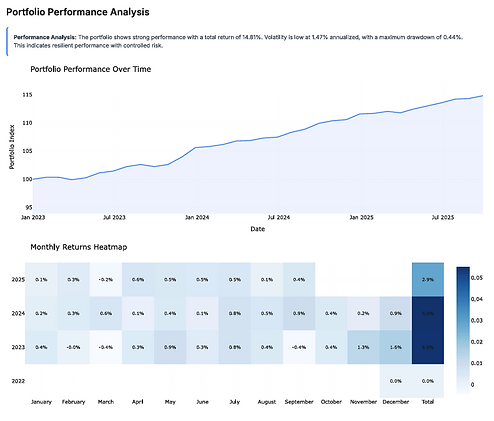
STONE CAPITAL
DEFINITIONS
What is Risk Analysis for?
Risk analysis of a financial portfolio is the process of identifying, assessing and controlling threats to an investment portfolio.
What is Return Analysis for?
Return analysis is the calculation of expected profits and losses of an assets' portfolio. Different methodologies allow to estimate the fair value of single assets, to calculate the correct mark to market value of the portfolio and to determine the expected returns of the investments.
Do markets always grow in the long run?
Generating positive returns in bullish financial markets is relatively straightforward; the real challenge lies in preserving those gains during bearish phases. While Western stock markets — particularly the U.S. market — have historically delivered positive long-term results, investors in equity products are frequently exposed to significant short- and medium-term fluctuations, with no guarantee of achieving a positive return by year-end.
Moreover, many investors, due to statutory constraints or internal policies, are limited to fixed income market investments. This requires them to simultaneously manage interest rate, credit, and exchange rate risks while striving to achieve net returns that exceed inflation. Successfully navigating these complexities is challenging, as a few misjudged decisions can undermine an entire year's performance.
For this reason, a thorough analysis of the financial instruments within a portfolio is crucial. Accurately assessing expected future returns and associated risks enables investors to minimize exposure and enhance long-term performance stability.
How do we create value in portfolio analysis?
Calculating the expected returns, not only observing only happened in the past, and analyzing risks properly are the only two relevant elements in a capital allocation process
What portfolio managers usually do?
Portfolio managers typically use statistical algorithms to find the best asset allocation, simulating thousands of portfolios in an attempt to maximize the Risk/Reward ratio. "Risk" is usually the standard deviation calculated on historical data and the expected "Return" is an average of the historical returns achieved by the portfolio in the past. Most statistical tools perform the same calculation and use past data to predict future data, although there is no guarantee that what happened in the past will happen again in the future.

Portfolio Enhancement
The data points are coloured according to their respective Sharpe ratios, with blue signifying a higher value, and red a lower value. The red star represents the portfolio with the highest Sharpe ratio, while the green star denotes the minimum variance portfolio.
How do we identify the best asset allocation?
The solution in our view is the perfect understanding of what are the expected returns of the portfolio’s assets. This means that for fixed income instruments we need to calculate the “fair value” of each bond and derivatives importing yield and credit curves, for equities we need to apply fundamental analysis to calculate the fair values and following technical indicators and news to discover the right time to invest. Beside in the recent years Neural Networks improve a lot forecasting methodologies. Best strategies need to be backtested before going on market in order to maximize probability of success.

Forecast Model with Recurrent Neural Network in Python
How to manage correctly risks?
A deep knowledge of the risks associated to a portfolio leads to the exact understanding of happens in case something goes wrong. Past data are not indicative for the future, so this can be achieved only through sensitivity analysis. The Sensitivity analysis is the study of how the uncertainty in the output of a mathematical model or system can be divided and allocated to different sources of uncertainty in its inputs. In the financial markets the Sensitivity analysis is a model that assesses how target variables are affected based on changes in other variables known as input variables.
Our Business Proposal
Our objective is to oversee clients' investment decisions and provide timely warnings should their choices deviate from predefined investment, risk, and return objectives. Our pricing and position-keeping system integrates seamlessly with the client's infrastructure, automatically monitoring investment decisions at a predetermined frequency and generating alerts as necessary. Depending on the selected service, predictive alerts can also be issued when there is a high probability of an adverse event occurring. Additionally, upon request, we provide periodic reports that fully comply with the requirements set forth by European supervisory authorities.
Why we are different?
Sophisticated pricing, hedging, forecasting and risk analysis models are often useless if the calculation is done by people who do not constantly follow financial markets. All our models are adopted and tested by traders and portfolio managers for portfolio managers.
examples of reports
Portfolio Analysis



Liquidity Stress testing and Sentiment Analysis


Cashflows calculation and YTM comparison with Swap Curves


Volatility and Return Distribution

VaR BackTesting

Real Time Limit Monitor for Ucits Funds or Proprietary Books

Limit Monitor for hundreds of Managed Accounts

... with automatic generation of suggestions

Powered by Python
Bond Portfolio build by code developed and improved by Artificial Intelligence
before: Portfolios generation


AFTER: REPORT GENERATION


